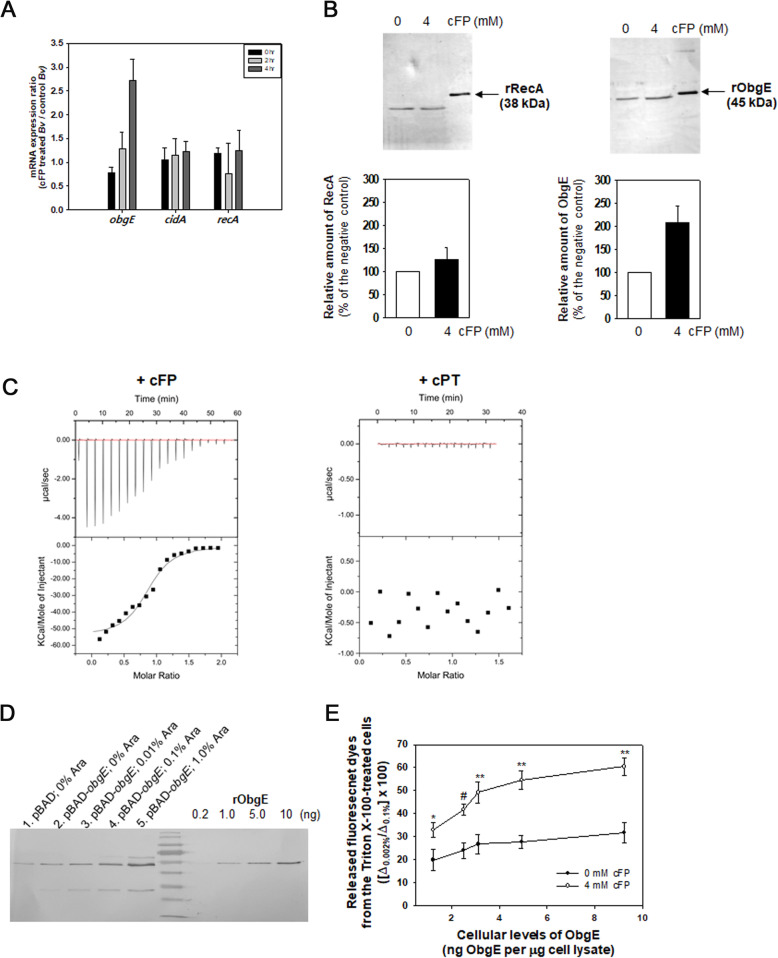Fig. 8.
Role of ObgE in cFP-mediated change in the membrane permeability of B. vulgatus. A Transcript levels of obgE, recA, and cidA in cFP-treated B. vulgatus. The total RNAs were extracted from B. vulgatus cells treated with 4 mM cFP for 0, 2, and 4 h. Then, cDNAs were produced through the reverse transcriptase reaction and subjected to quantitative PCR using primer sets specific to obgE, recA, or cidA (Additional file: Table S3). The transcript contents of each gene were normalized with the gap transcript levels. The ratios of normalized contents in cFP-treated cells to those in the control cells were plotted. B Protein levels of ObgE and RecA in cFP-treated B. vulgatus. Fifteen micrograms of protein lysates of B. vulgatus, which had been exposed to 0 or 4 mM cFP for 4 h, were fractionated in SDS-PAGE and subjected to western blotting analysis using anti-ObgE and anti-RecA polyclonal antibodies. As a positive control, rRecA (38 kDa) and rObgE (45 kDa) were included in the blots. Densitometric readings of the bands corresponding to each protein in the control and cFP-treated cells were plotted. C Specific binding of cFP to ObgE. Isothermal titration calorimetry (ITC) experiments were performed by titrating the recombinant ObgE (40 μM) with 400 μM cFP at 25°C. As a control, rObgE was titrated with 400 μM cPT under the same condition for ITC. D Differential expression of ObgE in B. vulgatus cells. Freshly grown B. vulgatus carrying the vector plasmid (pBAD/Myc-His B) or pBAD-obgEBv was added with various concentrations of L-arabinose ranging from 0% to 1.0% to differentially induce obgE expression. Upon 1 h induction, bacterial lysates (2 μg) were subjected to western blotting along with the known concentrations (from 0.2 to 10 ng) of rObgE to estimate the cellular contents of ObgE. E Effect of the cellular levels of ObgE on membrane permeability. The same cells prepared in Fig. 8D were exposed to 4 or 0 mM cFP for 6 h then mixed with 0.4 μΜ DiSC3(5). As described in Fig. 7, the values of released DiSC3(5) from 0.002% (Δ0.002%) and 0.1% Triton X-100-treated cells (Δ0.1%) were estimated. The ratios ([Δ0.002%/Δ0.1%] × 100) were plotted against the cellular contents of ObgE. shown in Fig. 8D. P-values for the comparison of 4 mM cFP-treatment with no cFP-treatment are indicated (Student’s t-test; ns, not significant; *0.001 < P < 0.01; **P < 0.001; #no p value determined)

